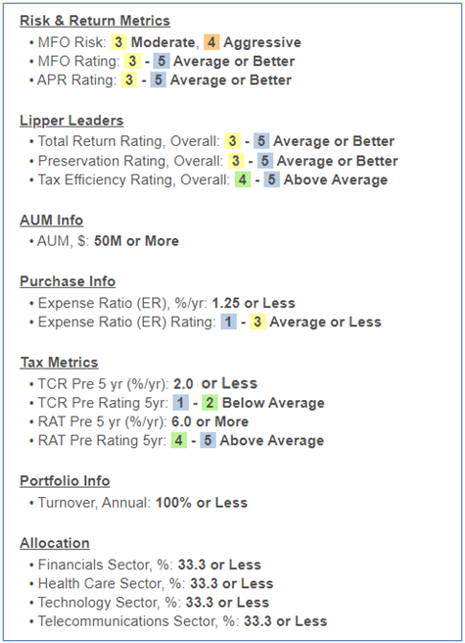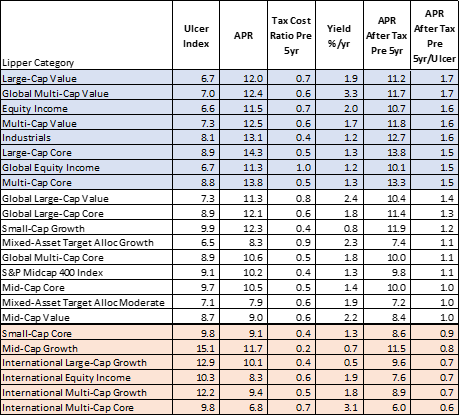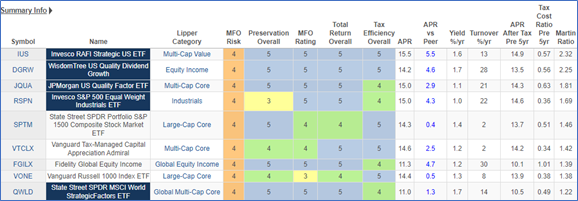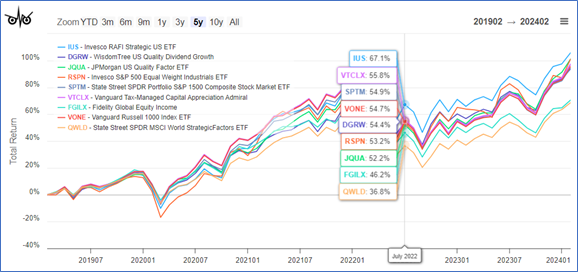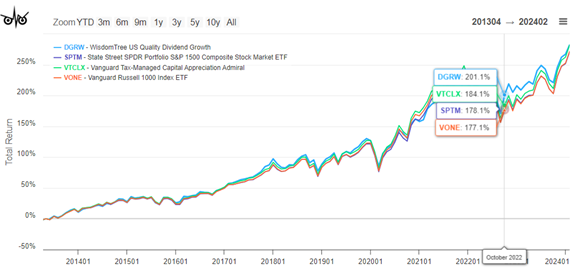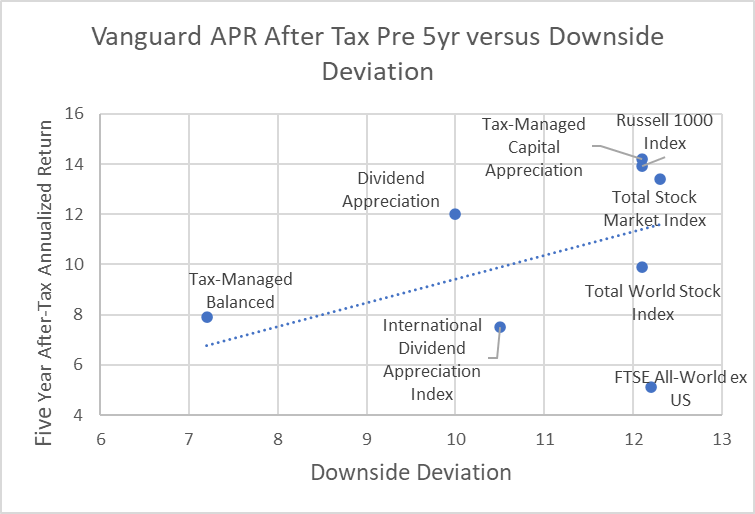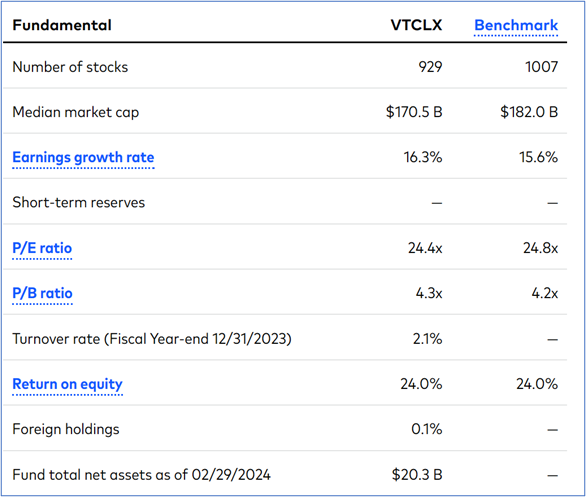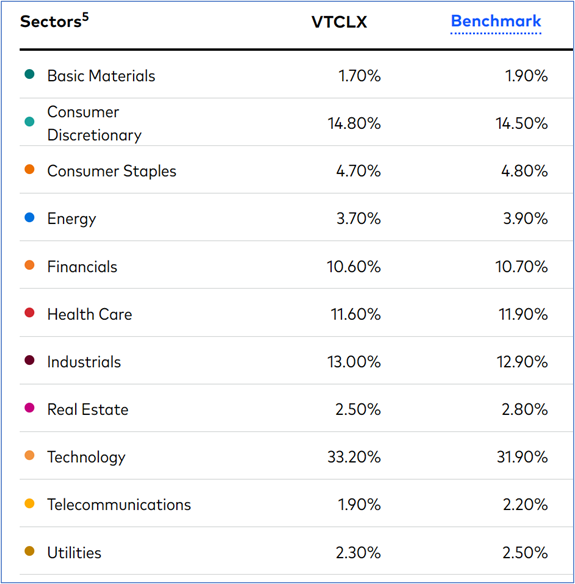It’s a great follow to take an intensive evaluation yearly of funding efficiency together with charges and taxes. A dual-income family might accumulate a half dozen or extra accounts due to tax traits, possession, and objectives. A great way to start out is to checklist the accounts so as of deliberate withdrawals. The subsequent step is to guarantee that every account has the suitable quantity of threat and that the property inside are tax-efficient for the kind of account. I’m within the strategy of changing Conventional IRAs to Roth IRAs and the conversion is taxed as abnormal earnings. Municipal Bonds are included in Modified Adjusted Gross Revenue and will influence Medicare Premiums (IRMAA). In after-tax accounts, earnings is taxed whereas inventory appreciation will not be till bought after which usually at decrease capital positive aspects charges. This is named the Bucket Strategy.
Our evaluation discovered that we had been paying over one p.c of property to have one particular goal, after-tax account managed with a 50% Inventory to 50% Municipal Bond Ratio. It’s a comparatively small, however vital account that I had arrange throughout unsure occasions to be tax environment friendly. Within the hierarchy of withdrawals, it will likely be the final account tapped. The suitable purpose for this account is for capital appreciation and ease whereas minimizing taxes. I take advantage of Constancy and Vanguard wealth administration companies for a few of our investments, and within the context of total portfolio administration, I’m searching for a single tax-efficient fairness fund to “purchase and maintain” for this account.
This text is split into the next sections:
Funding Goal
Collectively, my investments resemble a 60% inventory/40% bond diversified portfolio, partly as a result of I’ve pensions and Social Safety to cowl most dwelling bills and may face up to down markets. I focus Bucket #1 (Dwelling Bills) on short-term money equivalents equivalent to municipal cash markets and bonds. Bucket #2 is generally Conventional IRAs the place taxes are but to be paid and which have increased allocations to taxable bonds. Lengthy-Time period Bucket #3 consists of Roth IRAs and After-Tax Accounts that are concentrated in equities which might be tax-efficient if held for the long run or utilizing tax loss harvesting.
My objectives for this one fund are 1) to have excessive after-tax returns, 2) to reduce earnings and taxes, and three) to have respectable risk-adjusted returns as measured by the MFO Ranking. This usually means an fairness fund that pays low dividends and has low turnover.
Search Standards
Desk #1 reveals the factors that I used for the preliminary search. I restricted the mutual funds to Constancy and Vanguard. Whereas volatility will not be a significant consideration for this fund, I wished to remove essentially the most risky funds.
Desk #1: Search Standards For Tax-Environment friendly Funds
Abstract Of Lipper Classes
After a strategy of elimination, the search resulted in 32 mutual funds, and eighty-four exchange-traded funds in twenty-three Lipper Classes as proven in Desk #2. The classes are sorted from the best five-year After-Tax Annualized Return/Ulcer Index. The Ulcer Index is a measure of the depth and length of drawdowns. The highest part shaded in blue accommodates the Lipper Classes that I’m most occupied with, however I additionally need to contemplate international funds from the center part.
Desk #2: Tax-efficient Lipper Classes
Brief Checklist of Tax-Environment friendly Funds – 5-Yr View
I then went by way of the funds in every of the Lipper Classes and chosen one or two primarily based on after-tax return, fund household score, and tax effectivity, amongst different standards. The 9 funds in Desk #3 are excellent tax-efficient funds.
Desk #3: Brief Checklist of Tax-efficient Funds – 5 Years
Determine #1 reveals the five-year efficiency of those funds. The 2 international funds have underperformed, however this doesn’t concern me due to stretched valuations within the US.
Determine #1: Efficiency of Brief Checklist of Tax-efficient Funds – 5 Years
Closing Checklist of Tax-Environment friendly Funds – Ten-Yr View
I then appeared on the funds over a ten-year interval. All the funds in Desk #4 are excellent, however I favor Vanguard Tax-Managed Capital Appreciation (VTCLX) and WisdomTree US High quality Dividend Development (DGRW). Determine #2 reveals the ten-year efficiency of those funds.
Desk #4: Closing Checklist of Tax-efficient Funds – Ten Years
Determine #2: Efficiency of Closing Checklist of Tax-efficient Funds – Ten Years
Vanguard Tax-Managed Capital Appreciation (VTCLX)
I made a decision to put money into the Vanguard Tax-Managed Capital Appreciation Admiral Fund (VTCLX). The hyperlink to the documentation is right here. Determine #3 reveals how VTCLX compares to different Vanguard funds for After-Tax Returns versus Draw back Deviation. It has excessive after-tax returns however roughly matches the whole marketplace for volatility.
Determine #3: APR After-Tax Pre-5Year Versus Draw back Deviation
Product Abstract
“As a part of Vanguard’s collection of tax-managed investments, this fund gives traders publicity to the mid- and large-capitalization segments of the U.S. inventory market. Its distinctive index-oriented strategy makes an attempt to trace the benchmark whereas minimizing taxable positive aspects and dividend earnings by buying index securities that pay decrease dividends. One of many fund’s dangers is its publicity to the mid-cap section of the inventory market, which tends to be extra risky than the large-cap market. Traders in a better tax bracket who’ve an funding time horizon of 5 years or longer and a excessive tolerance for threat might want to contemplate this fund complementary to a well-balanced portfolio.”
Fund Administration
Vanguard Tax-Managed Capital Appreciation Fund seeks a tax-efficient complete return consisting of long-term capital appreciation and nominal present earnings. The fund tracks the efficiency of the Russell 1000 Index—an unmanaged benchmark representing large- and mid-capitalization U.S. shares. The advisor makes use of portfolio optimization strategies to pick a pattern of shares that, within the mixture, mirror the traits of the benchmark index. The method emphasizes shares with low dividend yields to reduce taxable dividend distributions. As well as, a disciplined promote course of minimizes the conclusion of web capital positive aspects and will embody the conclusion of losses to offset unavoidable positive aspects. The expertise and stability of Vanguard’s Fairness Index Group have permitted steady refinement of indexing strategies designed to reduce monitoring error and supply tax-efficient returns.
Desk #5 accommodates the basics for VTCLX and Desk #6 accommodates the sector allocations.
Desk #5: VTCLX Fundamentals
Desk #6: VTCLX Sector Allocation
Closing
Over the following ten years, changing this 50% Inventory/50% Bond account to DIY with one fairness fund ought to lead to saving 1000’s of {dollars} in charges, enhance returns, and scale back taxes. It suits into an total balanced portfolio and meets my targets of conserving it easy. At the moment, this account has a combination of high quality ETFs. I’ll regularly convert them over to the Vanguard Tax-Managed Capital Appreciation (VTCLX) when market situations are favorable.



